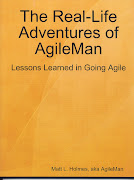John Wyndham's 1953 novel, The Kraken Wakes, is not one of his better known works. That distinction would obviously go to The Day of the Triffids and The Midwich Cuckoos (the latter of which is the basis for The Village of the Damned film). Since reading Kraken in 2001, though, it's been one of my favourites of his books. Like Triffids (and an earlier gem by the legendary H.G. Wells, called The War of the Worlds), it's an alien invasion tale. In this case, though, the attackers are never actually seen.
The "bathies", as they're called by the folks in the story, come to Earth in red, glowing fireballs that always land in the deepest parts of the planet's oceans. Or, at least, that's the theory held by the narrator, as no definitive proof is ever offered as to their origins. Instead, the fireballs arrive by the dozens or hundreds, but then are mostly forgotten when a few years go by with no further incident. It's only when ships begin going down at sea that suspicions begin to build that something out there has it in for humanity.
There's an amazing transition within the pages of The Kraken Awakes that blows me away every time I read it. At the end of Phase Two, the section detailing the initial attacks on the shipping lanes followed by incursions onto land by "sea tanks" (giant shell-like creatures that send out sticky material which pulls in everything it touches), the human race has successfully defended against each new strategy devised by the unseen bathies. The main scientist in the story says, "Consider their alternatives. Either they sit down there waiting for us to find a means to destroy them, or they come after us. Oh yes, unless we find it very soon, they'll be here again - somehow..."
The very next chapter - kicking off Phase Three - begins with the narrator and his wife afloat in a rubber boat with minimal provisions and a dreary outlook. As the pages are turned, we come to realize that some time has passed and significant portions of the planet's surface are now underwater, and mankind is mostly at war with itself over the last few scraps of food to be found. Everything in the book up to this point has been typical 1950s British "stiff upper lip" type stuff: everyone's convinced the powers that be will defeat the bathies and things will shortly be back to normal. And then you read on and see just how quickly it all fell apart, once the aliens began melting the polar ice caps!
Now, in 1953, I doubt very much that Wyndham was thinking that we'd ever truly be worried about such a doomsday scenario. And yet just half a century later, without the intervention of any extraterrestrials required, that's exactly what we're facing. How strange is that? I couldn't help thinking about that as I read the last portion of the book, in which you learn that somewhere between 4/5 and 7/8 of the world's population has succumbed to pneumonia and starvation as the amount of arable land shrank under the waves. Is that what our own future holds, over the next half century?
Subscribe to:
Post Comments (Atom)















No comments:
Post a Comment